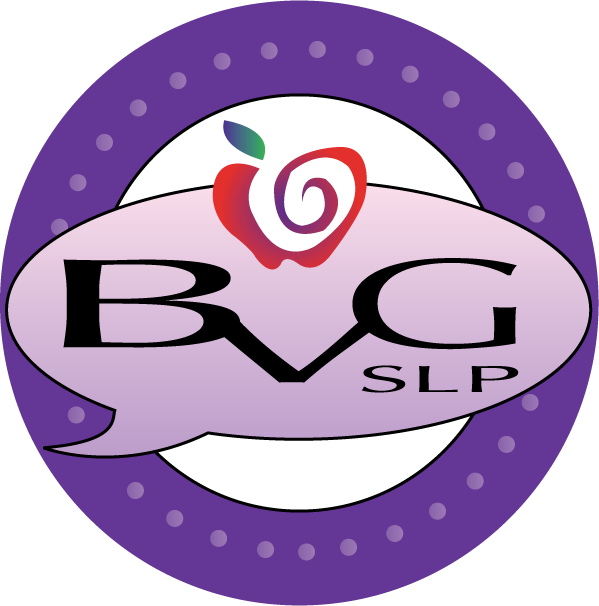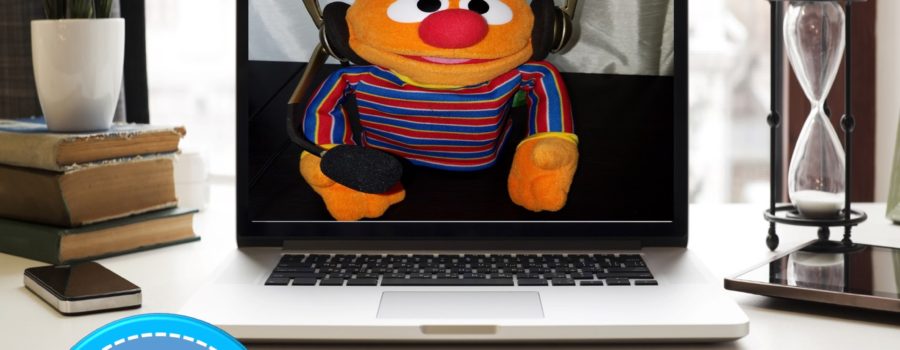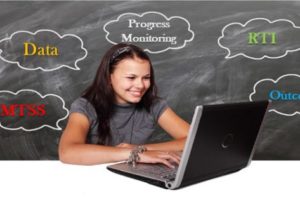Using Hand Puppets in Teletherapy Sessions
Do you use hand puppets in your teletherapy sessions? I certainly do and have found that they are very motivating, engaging, and a fun way to add a fun dynamic twist to my groups. When I worked in the traditional brick and mortar setting, I used puppets regularly with my younger students. They were a great way to model the behaviors and targets that I was looking for in a way that ensured that my students were actually listening. Now that I’m a teletherapist, I feel puppets are equally as engaging, if not more because with the added technology it is a double win. I have received a few requests about how I incorporate them into my sessions so I decided to write this post to give you a few specific examples. I always follow my students’ lead and will use the puppet based on their response. With some students, I only bring out my puppet at the end of the session as a reward but with others who are more engaged, I may use the puppet for the majority of the session. It really depends on the student and is a case by case basis. Here are just a few suggestions:
Articulation Sessions
When working with my students on artic targets, I use my puppets to model the target sound for the student. I will say the sound first, for example “/k/ is the karate sound, /k/ is the karate sound, /k/, /k/, /k/”. I do this while also showing the student my visual hand motion. Before having my student repeat I would might say, “Can Ernie have a turn?” I would then repeat using Ernie and also have him make the hand motion. Once Ernie has had a turn I would have him say to my student, “now your turn.” After the student has practiced their target sound in isolation we would proceed with our activity to address the /k/ sound. I personally love using Boom Cards, and at this point I may put the puppet away and continue with the session. I would keep him close by to praise and encourage my student when good sound productions are made. I may tell them that Ernie loves to hear good speech sounds. When the students produces the target correctly, I would bring Ernie out for just a second to praise the student (keeping him on your hand and under the desk makes this go quickly).
Auditory Discrimination
For articulation therapy it is very important for students to be able to discriminate between correct and incorrect productions of their target sounds. Puppets are a great way to practice this by having the puppet say target words correctly and incorrect and asking your student if the puppet said it right. When doing this I allow my students to pretend to be the “Speech Therapist” and Ernie is their student. We go back and forth through a list of target words and while Ernie produces the words I ensure that there are several intentional misarticulations to determine if my student can identify the correct productions from the incorrect ones. Students really enjoy this and get excited to be the “Therapist” for the day.
Literacy and Language
I love incorporating literacy into all of my sessions and a great way to do this with puppets is to have your puppet read the short story or passage to your student in a fun and playful voice. As we are reading, I stop at key points to describe the pictures, talk about the story elements, and have my puppet ask the student questions about the story. Again, it really depends on your student but I primarily do this with my younger students who are functioning at a 3-5 year old developmental age.
Language Sessions
The possibilities are endless when it comes to using your puppets in language sessions. Because I generally use my puppets with my youngest students we do a lot of reinforcement of basic concepts. I might play a ‘Where is Ernie’s Toy’ game (this can be done with a number of objects that you incorporate to review vocabulary – truck, car, block, ball, etc). I will put the toy in various locations in relation to Ernie and have the student identify the location.
Depending on the student’s goals I use my puppet to model the correct answers and then allow my student to have a turn. For instance, if they are working on describing I might have the puppet show them how to describe an object using their five senses. When it is their turn to describe I would cue them as necessary by allowing Ernie to ask them questions – what does it look like, what does it taste like, what does it sound like, what does it feel like, what does it smell like?
If the student goal is related to asking and answering questions again, I would use my puppet to model the target that I’m looking for followed by several opportunities for the student to demonstrate understanding. For instance, I might say something like, “Ernie wants to know the time….hmmm I’m wearing a watch, I wonder what he should do?” If the student picks up the cue and says ask “what time it is?” Then I would praise them and have Ernie get super excited as he asks me, “What time is it?” If the student doesn’t pick up the cue, I would continue to scaffold but have Ernie start saying things like, “I’m going to be late for school, I need to be there at 9:00, what should I do, I wish I knew what time it was?” We would continue and get excited when he finally asks me, “What time is it?”
Modeling Behaviors
Puppets are a great way to encourage your students to do what you expect them to do. If I’m working with a student who struggles to show me full body listening. Instead of frequently telling them what they are doing wrong I would use my puppet as a way to praise them for what they are doing right. I might say, “I LOVE the way Ernie is showing me full body listening! He has his hands in his lap, he is looking at the computer, he is sitting up nice and tall, he has his headset on, he is quietly waiting for his turn. Thank you so much, Ernie you are working hard to earn your reward.” This usually works like a charm, the student will start to do the things that I am praising my puppet for. If they do those things immediately both me and the puppet get very animated to praise the student and give them a quick reward…10-second video of their choice or quick game for doing what is expected. We then get back to working on their targets.
Pragmatics Sessions
When working with students who need a bit of support with pragmatics puppets are another great tool to show them appropriate skills. Puppets are good for rrole-playingskits to show students turn-taking in conversations, topic maintenance, etc. If I have a student who interrupts frequently or is off topic most of the time, I might show them what this “looks/feels” like by having Ernie interrupt me every time I’m trying to speak. I would then encourage Ernie to please allow me to finish before he speaks. I would model the appropriate behavior using Ernie and then praise Ernie for being patient and listening to me first and then having his turn to talk.
These are just a few of the ways that I have successfully used puppets in my teletherapy sessions. I will say again that it does depend on your student and the specific individualized needs of your students. I like to be silly and have fun WHILE working on my therapy targets and have found that the outcomes are so much better when my students are having fun too. I do get to know my students and always tailor my sessions to do what works best for them. If you use puppets in your therapy sessions I would love to hear your ideas. Please don’t be shy, comment below and let me know some of the ways they have worked for you! Until next time, thanks for reading.







Leave a Reply
Your email is safe with us.